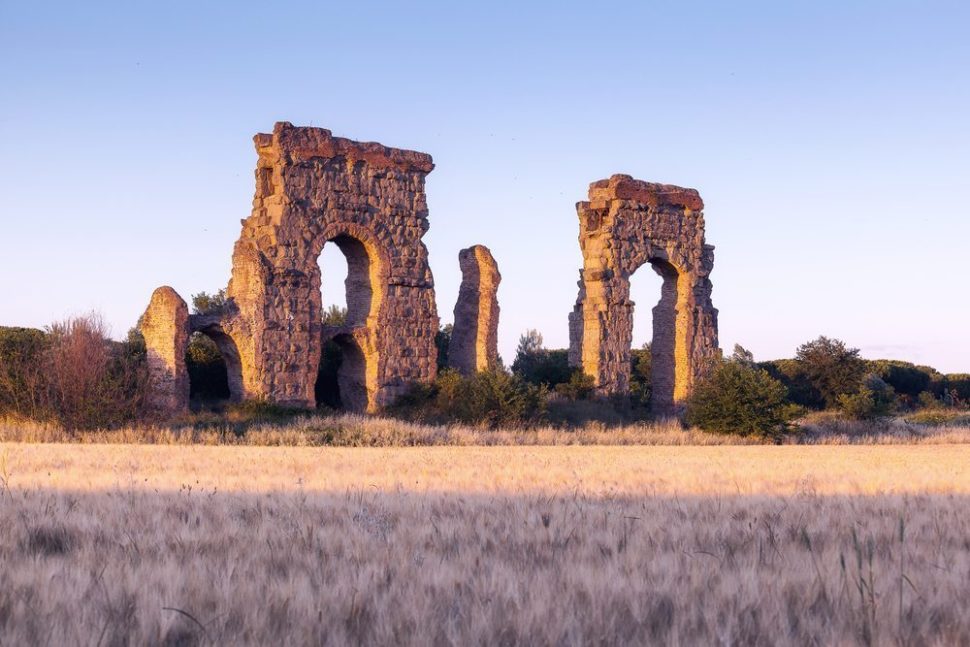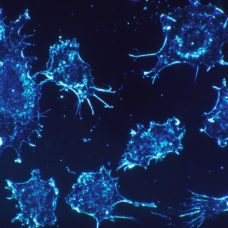Cultivation of crops has influenced everything human, from our social hierarchies to the strength of our bodies. Maybe it’s time to make a change.
In Europe, it is generally accepted that agriculture began some 8,000 years ago, as nomadic peoples transitioned into more sedentary lifestyles in the Neolithic era.
These early European farmers inherited grains and cultivation practices from Mesopotamia in Southwest Asia, using the hardier grain varieties like Emmer wheat, Einkorn wheat, and Barley. By the time Mesopotamian farming spread into Europe, several thousand years later, Rye was also being used in cultivation.
As cities grew, more grains had to be produced to feed them. For the first time, portions of the population kept up with securing food resources for survival, while others provided other necessary services.
This phenomenon has probably led to every major development of our combined histories, but it has also come with costs.
Recently, we’ve heard a lot about gluten, a protein existing in wheat grains and related plant species. In particular, we’ve heard about gluten intolerance. In severe cases, celiac disease appears and prevents people from ingesting gluten at all. There are reasons why, but we’ll get into those a little later.
In the meantime, let’s see what grains have done for Europeans and perhaps Southwest Asians in the past 8,000 years.
As City Populations Grew, Arable Land was Swallowed up
In a Nature Plants study, University of Oxford researchers used carbon and nitrogen isotope analysis of burnt Mesopotamian ancient grains to recreate the environmental conditions of when and where the crops grew.
The researchers suggest that the importance of arable land grew rapidly during this time. And, in a move that would color the rest of our history up to this point, it is likely that a fortunate few took control of the best land and, by hoarding it, created a profound social inequality.
Amy Bogaard from Oxford’s School of Archaeology says, “Each cereal grain found buried in an archaeological site holds within it a record of the environmental conditions under which it was grown.
“We found that the rise of early cities in northern Mesopotamia depended on radical expansion of the scale of farming. As a result, cereals were grown under increasingly poor soil conditions: for example, with less manuring and replenishment of nutrients. It was a solution that enabled enormous urban agglomerations to develop, but was risky when environmental or political conditions changed. Examining how prehistoric farmers coped with changing conditions could yield some useful advice for modern day governments facing similar pressures of growing populations and changing environments.”
pre-Neolithic human bones were much denser than ours today.Click To TweetInitially, in the early times of Mesopotamian agriculture, fertilizers such as manure were not used to replenish nutrients in the soil of the arable land. Therefore, the size of land needed grew rapidly.
These early civilizations must have been divided between those who owned the land and those who needed the plants it grew to survive.
This was not a capitalistic economy, but the concepts of supply and demand were fully exploited.
This early Mesopotamian cultivation took place sometime between 20,000 and 10,500 years ago, sometimes referred to as the Epipaleolithic era.
Although it took some time for agriculture to spread to Europe, once it did, similar social hierarchies emerged.
Europe’s Early use of Manure
Another University of Oxford research team found that European Neolithic farmers manured their crops as early as 8,000 years ago. This makes their farming practices more advanced than previously thought.
The research shows that nitrogen-15, an abundant isotope in manure, was found in pulse seeds and cereal grains recovered from over a dozen Neolithic European locations.
Dr. Amy Bogaard said of this study, ‘The fact that farmers made long-term investments such as manuring in their land sheds new light on the nature of early farming landscapes in Neolithic times. The idea that farmland could be cared for by the same family for generations seems quite an advanced notion, but rich fertile land would have been viewed as extremely valuable for the growing of crops. We believe that as land was viewed as a commodity to be inherited, social differences in early European farming communities started to emerge between the haves and the have-nots.’
And this relationship between those that have wealth and those that do not have wealth continues to this day.
Evidence for Differential Land Usage
The Universities of Bristol, Oxford, and Cardiff studied more than 300 European human skeletons and found evidence of differential land access among early Neolithic farmers. The findings are the earliest examples of differential land access yet known.
Professor Alex Bentley, who conducted the study, said “It seems the Neolithic era introduced heritable property (land and livestock) into Europe and that wealth inequality got underway when this happened. After that, of course, there was no looking back: through the Bronze Age, Iron Age and Industrial era wealth inequality increased but the ‘seeds’ of inequality were sown way back in the Neolithic.”
In the most liberal countries today whole communities struggle to repair inequalities between people. A common question is: have these inequalities always existed? Or did they arise when we settled down into organized civilizations?
Going further, now that we have solved many survival-related issues with modern technologies, can we erase ingrained inequalities and still continue to progress?
Who knows, really.
Yet, even if we are unable to shrug off our long-standing biases and wealth inequalities, we should consider eliminating grains from our diets. Why? Let’s discuss.
Agriculture has Weakened our Bones
Researchers have found that early nomadic humans had far denser trabecular bone than modern humans.
There seem to be two sides to the explanation of how and why this happened.
First, our activity levels have gone down considerably since we began living much more sedentary lifestyles.
These researchers noticed that the decrease in bone density was greater in the lower body than in the upper body. This, by itself, suggests a link between bone density and changes in physical activity.
There are multiple studies that also find this correlation.
The density of 7,000-year-old nomadic peoples’ bones was 20 percent higher than civilized farmers from 700 years ago. If you go back 150,000 years human bones were even denser.
Evidence suggests that the transition to the frail modern man happened recently and quickly (in terms of relative evolutionary timelines). These researchers, who published their study in the journal Proceedings of the National Academies of Science, argue that human bone density will continue to decline as technology makes our lives even easier.
Second, the inclusion of grains into our diet seems to have contributed to the weakening of our bones–and may even be linked to the most chronic diseases of modern Western civilization.
Bess Dawson-Hughes, of the Bone Metabolism Laboratory, says, “As the pH goes down in the blood just a little bit, that activates a specific receptor in bone, creating a chain of events that results in bone resorption. It signals bone to break down, which dumps alkali into the circulation, neutralizing the acid. It’s a defensive response—our bodies are basically defending against a dropping pH.”
Grains contain sulfur compounds, and because of that, they break down into sulfuric acid and other byproducts that increase the body’s overall acidity. As the author of this article indicates, the actual change in blood pH is minute. Yet, this small change could still trigger bone loss.
Further study by Dawson-Hughes indicates that putting alkali into the body could potentially counteract acids and thereby decrease bone loss.
“I wouldn’t be surprised if in the future we find that acid-base plays a role in bone health, but I think it’s unlikely that it’s the only thing that has an effect,” says Dawson-Hughes.
Here’s an in-depth study of the differences between pre-agricultural and post-agricultural human diet and how that could affect our overall health.
Even if You’re not Celiac, Gluten Harms you
Dr. Tom O’Bryan, a chiropractor and international Celiac disease expert, says that every time you ingest gluten, it breaks down the microvilli in your intestines.
Certain microvilli absorb certain compounds. For example, there are different microvilli for absorbing proteins, calcium, fats, and magnesium.
Earlier in life, O’Bryan suggests that your gut can heal itself pretty well. But, over time and with prolonged exposure to microvilli damage by gluten, the gut has a hard time healing itself. This is further complicated by having a weak intestinal tract in the first place.
When the microvilli don’t recover, your intestines are left unable to absorbs certain nutrients. Many times, these are the exact nutrients we need for our bones to repair themselves.
“In fact, the bone-gluten connection is so strong that a 2006 study in the Archives of Internal Medicine says ALL osteoporosis patients should be checked for celiac disease since that could very well be the cause of their osteoporosis,” says Irma Jennings, who also has resources for testing your gluten sensitivity.
Where Should we go From Here?
The cultivation of grains has contributed to social inequalities and chronic health issues, but it has also enabled us to take our wealth of knowledge to new heights. In fact, without the advent of grains, it’s possible that we would never have been able to study and conceive of these profound effects on our history.
And today, we face the overpopulation problems that these earlier agricultural societies faced.
However, we can’t just spread to untamed land or sew more manure into our fields. We are approaching critical mass or a “full Earth.”
The most powerful, influential people in our societies are often still huge landowners (albeit not arable farming land). Just look at real-estate-tycoon-turned-U.S.-President Donald Trump for a good example.
Yet, as an unseen consequence of our technological advancement, people can attain intellectual wealth.
Let’s assume that the solution to our overpopulation problem is colonization of the Moon or Mars. Would China or Elon Musk, respectively, then control all of the power in these new domains?
And, if they did, would anyone point out the similarities between Neolithic arable land owners and SpaceX?
We would.









Comments (0)
Most Recent